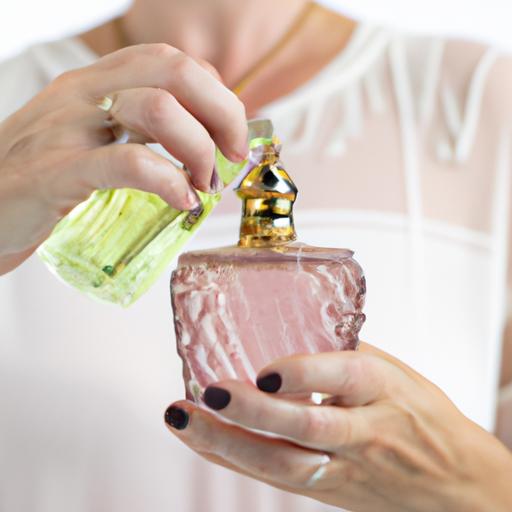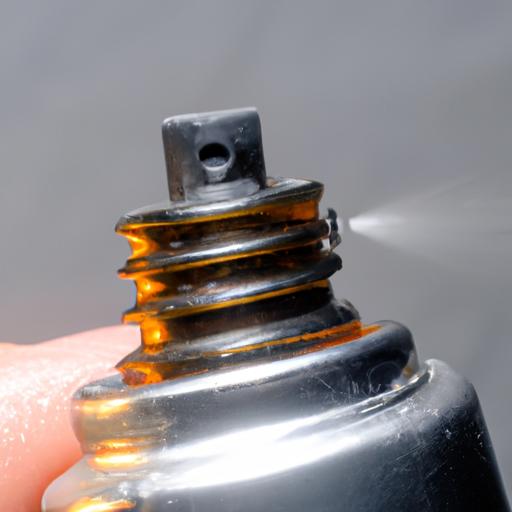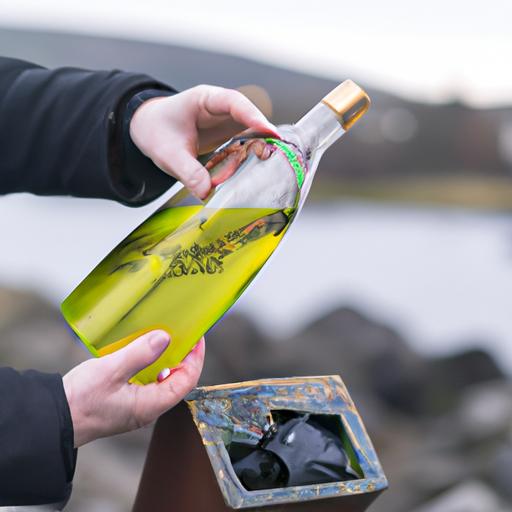How to Extract Perfume Oil: A Comprehensive Guide

Introduction
Are you a fragrance enthusiast who desires to delve deeper into the enchanting world of perfume oil extraction? Look no further! In this article, I will walk you through the art of extracting perfume oil, unraveling the secrets behind this captivating process. Whether you’re a hobbyist or aspiring perfumer, understanding the correct techniques for extracting perfume oil is paramount to creating aromatic masterpieces that truly captivate the senses.
Why is extracting perfume oil correctly so important, you may wonder? Well, my friend, the quality of your perfume oil hinges upon the extraction process. By mastering the art of extraction, you ensure that your final product exudes the desired fragrance notes in their purest form. Imagine crafting a symphony of scents, each note in perfect harmony, tantalizing the olfactory senses with its allure. Achieving such perfection requires precision and expertise in the extraction process.
Now, you might be wondering why we’re discussing SEO techniques in an article about perfume oil extraction. Well, my dear reader, employing SEO techniques ensures that this article reaches fragrance enthusiasts like you who are eagerly seeking knowledge and guidance. By optimizing this article, we can ensure that it stands out amidst the sea of information on the internet, grabbing your attention and providing you with valuable insights. So, let’s embark on this aromatic journey together, as we explore the intricacies of perfume oil extraction and the wonders it holds.
Understanding Perfume Oil Extraction
Definition of Perfume Oil Extraction
Before we dive into the various methods of perfume oil extraction, let’s first understand what it entails. Perfume oil extraction is the process of obtaining essential oils from botanical sources to create fragrances that capture the essence of nature. These oils serve as the foundation for perfumes, colognes, and other scented products, providing the aromatic notes that make them so alluring.
Different Methods of Perfume Oil Extraction
Now that we have a grasp of the concept, let’s explore the different methods used to extract perfume oil. Each method offers unique advantages and is suited for specific botanical sources.
-
Steam Distillation: This traditional method involves using steam to gently extract the essential oils from the plant material. The steam vaporizes the oils, which are then condensed, resulting in a concentrated perfume oil. Steam distillation is ideal for extracting oils from flowers, leaves, and stems.
-
Solvent Extraction: Solvent extraction employs the use of solvents, such as hexane or ethanol, to dissolve the essential oils from the plant material. This method is particularly effective for extracting oils from delicate flowers that may not withstand steam distillation. The solvent is evaporated, leaving behind the precious perfume oil.
-
Cold-Press Extraction: This method is primarily used for citrus fruits, such as oranges and lemons. The fruit’s outer peel is mechanically pressed to release the fragrant oils trapped within the peel’s glands. Cold-press extraction is known for producing vibrant and zesty perfume oils.
Factors to Consider Before Starting the Extraction Process
Before embarking on the perfume oil extraction journey, several factors should be taken into account:
- Botanical Sources: Selecting the right botanical sources is crucial, as different plants yield different scents and strengths. Research and choose plants that align with your desired fragrance profile.
- Quality of Plant Material: Opt for high-quality plant material to ensure the best possible perfume oil. Freshness, ripeness, and proper storage all contribute to the final product’s quality.
- Safety Precautions: Perfume oil extraction involves the use of flammable substances and equipment. It’s essential to prioritize safety measures, such as proper ventilation and protective gear, to prevent accidents.
Now that we’ve laid the foundation of perfume oil extraction, let’s move on to the equipment and materials necessary for the process.
Equipment and Materials Needed
A. List of Essential Equipment for Perfume Oil Extraction
To embark on your perfume oil extraction journey, you’ll need the right tools at your disposal. Here are some essential equipment items to ensure a successful extraction process:
-
Distillation Apparatus: A distillation apparatus, consisting of a still, condenser, and receiving flask, is crucial for steam distillation. This apparatus facilitates the separation of the aromatic compounds from the plant material.
-
Solvent Extraction Equipment: If you opt for solvent extraction, you’ll require a solvent extraction apparatus, including a Soxhlet extractor or a Clevenger apparatus. These tools aid in extracting the aromatic compounds using solvents like hexane or ethanol.
-
Cold-Press Extraction Tools: For cold-press extraction, you’ll need a cold-press machine or a mortar and pestle to gently extract the oils from the plant materials without the use of heat.
B. Types of Raw Materials Required for the Process
The raw materials you choose play a vital role in the quality and fragrance profile of your perfume oil. Here are some common botanical sources used in perfume oil extraction:
-
Flowers: Delicate and aromatic flowers like roses, jasmine, and lavender are popular choices for perfume oil extraction. Each flower imparts its unique fragrance, allowing you to create a diverse range of scents.
-
Fruits and Citrus Zests: Fruits such as oranges, lemons, and grapefruits, along with their zests, add a refreshing and vibrant aroma to perfume oils.
-
Herbs and Spices: Botanicals like basil, thyme, cinnamon, and cardamom bring depth and complexity to perfume oils, infusing them with warm and savory notes.
C. Importance of Using High-Quality Equipment and Materials
When it comes to perfume oil extraction, the quality of your equipment and materials directly impacts the final product. Investing in high-quality tools and sourcing premium raw materials ensures superior fragrance profiles and longevity of your perfume oils. Inferior equipment may lead to inefficient extraction or contamination, compromising the aroma and overall quality.
Moreover, using high-quality raw materials guarantees the authenticity and purity of your perfume oils. By selecting fresh, organic, and ethically sourced botanicals, you ensure that your perfume oils reflect nature’s true essence. Remember, the essence of perfection lies in the details, and the right equipment and materials are the building blocks of extraordinary perfume oil extraction.
Step-by-Step Guide to Extract Perfume Oil
Are you ready to dive into the enchanting process of extracting perfume oil? Let’s embark on a step-by-step journey that will unlock the secrets of capturing the essence of nature’s botanical wonders.
A. Preparing the Raw Materials
Before we begin the extraction process, it is crucial to prepare the raw materials properly. Here’s what you need to do:
-
Choosing the Right Botanical Sources:
The quality and aroma of your perfume oil depend heavily on the botanical sources you select. Research different plants and their aromatic profiles to identify the ones that align with your desired fragrance. Whether it’s roses, lavender, or citrus fruits, ensure you choose high-quality botanical sources to achieve exceptional results. -
Gathering and Drying the Plant Materials:
Once you’ve identified your botanical sources, it’s time to gather the plant materials. Select healthy and fully matured plant parts, such as flowers, leaves, or peels, depending on the plant. After gathering, gently clean the materials to remove any impurities. Next, dry them thoroughly in a well-ventilated area, preserving their aromatic compounds.
B. Selecting the Appropriate Extraction Method
Now that your raw materials are ready, it’s essential to choose the right extraction method for your perfume oil. Here are some common techniques:
C. Conducting the Extraction Process
It’s time to unveil the secrets of perfume oil extraction. Let’s explore three popular methods: steam distillation, solvent extraction, and cold-press extraction.
-
Following the Specific Steps for Steam Distillation:
Steam distillation is widely used for extracting essential oils, including perfume oils. In this method, steam passes through the plant material, causing the release of aromatic compounds. The steam and oil vapor then condense, separating the perfume oil from the water. Each plant has its specific requirements, so be sure to follow the precise steps for steam distillation to extract the essence of your chosen botanical source. -
Implementing Solvent Extraction Techniques:
Solvent extraction is ideal for delicate flowers that may not withstand the high temperatures of steam distillation. In this method, a solvent, such as hexane or ethanol, is used to dissolve the aromatic compounds from the plant material. The solvent is then evaporated, leaving behind the concentrated perfume oil. Exercise caution and follow proper safety protocols when working with solvents. -
Cold-Press Extraction Procedure:
Cold-press extraction is commonly used for citrus fruits. The peel is mechanically pressed to release the essential oils. This method is straightforward and yields a vibrant, fresh fragrance. However, it’s important to note that cold-press extraction may not be suitable for all botanical sources.
D. Filtering and Storing the Extracted Perfume Oil
Once you’ve successfully extracted the perfume oil, it’s time to filter and store it appropriately. Filtering removes any impurities or plant residue, ensuring a pure and refined fragrance. Store the perfume oil in dark, airtight glass bottles, protecting it from heat, light, and moisture. Proper storage preserves the integrity and longevity of your perfume oil, allowing you to enjoy its captivating aroma for an extended period.
With this step-by-step guide, you’re now equipped to embark on your perfume oil extraction journey. So roll up your sleeves, gather your materials, and let the aromatic adventure begin!
Tips and Tricks for Successful Extraction
Maintaining Proper Hygiene During the Process
When it comes to extracting perfume oil, maintaining impeccable hygiene is crucial. Just like a master chef in a pristine kitchen, you must ensure a clean and hygienic workspace to prevent any contamination. Start by thoroughly cleaning all equipment and utensils before each extraction session. This includes sterilizing glassware, wiping down surfaces, and using gloves to prevent any transfer of oils or bacteria. By upholding proper hygiene practices, you guarantee that your perfume oil remains pure and untainted, allowing its true essence to shine through.
Monitoring Temperature and Time for Better Results
Achieving the perfect balance of temperature and time is an essential aspect of successful perfume oil extraction. Different botanical sources require specific temperature ranges and extraction durations to yield optimal results. For steam distillation, maintaining a consistent temperature throughout the process is key. Too high, and you risk damaging the delicate aromatic compounds; too low, and the extraction may fall short. Similarly, understanding the ideal extraction duration for each botanical source ensures that you extract the maximum fragrance potential without overextraction. Remember, patience is paramount in this delicate process.
Incorporating Specific Techniques for Different Botanical Sources
Just as each flower blooms uniquely, different botanical sources require specific extraction techniques to yield their finest perfume oils. Take the time to research and understand the specific techniques suitable for the plants you are working with. For example, delicate flowers like roses may benefit from enfleurage, while citrus fruits may require cold-press extraction. By tailoring your methods to each botanical source, you unlock the true essence of their fragrant offerings, resulting in exquisite perfume oils.
Troubleshooting Common Extraction Issues
Even the most experienced perfume oil extractors encounter challenges along the way. Understanding and troubleshooting common extraction issues can help you navigate through any hurdles you may face. Whether it’s low yield, off-putting aromas, or inconsistent results, there are ways to overcome these obstacles. Engage with experienced perfumers, join online communities, or consult reputable resources to gather insights and solutions. Remember, every hurdle presents an opportunity to learn and grow as an extractor, bringing you closer to perfecting the art of perfume oil extraction.
By following these tips and tricks, you elevate your perfume oil extraction skills to new heights. With a commitment to hygiene, temperature and time management, tailored techniques, and a troubleshooting mindset, you pave the way for aromatic excellence. So, embrace these valuable insights and embark on your journey as a maestro of perfume oil extraction.
Conclusion
In conclusion, the art of perfume oil extraction is a fascinating journey that requires precision, knowledge, and a touch of creativity. By understanding the various extraction methods, gathering the right botanical sources, and employing proper techniques, you can unlock the captivating scents hidden within nature’s bounty.
Remember, the importance of extracting perfume oil correctly cannot be overstated. It is the foundation upon which your aromatic creations are built. By following the step-by-step guide outlined in this article, you can ensure that your perfume oil exudes the desired fragrance notes, creating an olfactory experience that is truly enchanting.
As we conclude this aromatic adventure, I encourage you to embrace experimentation and refinement. Perfume oil extraction is an art, and like any art form, it thrives on creativity and personal touch. Don’t be afraid to explore new botanical sources, implement innovative techniques, and unleash your imagination. The possibilities are endless, and the potential for creating unique and captivating scents is limitless.
Finally, I would like to express my gratitude for joining me on this fragrant journey. If you crave more knowledge and inspiration, be sure to visit cosmetic.cungcapngoi.com, where you can find a wealth of resources and products to fuel your passion for perfume creation. Boldly embark on your perfume-making endeavors, and may your aromatic creations leave an indelible mark on the world.
Conclusion: So above is the How to Extract Perfume Oil: A Comprehensive Guide article. Hopefully with this article you can help you in life, always follow and read our good articles on the website: cosmetic.cungcapngoi.com




